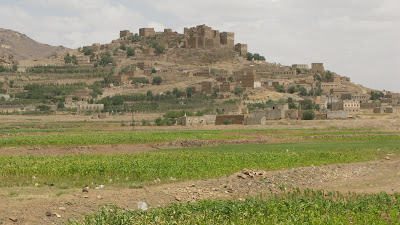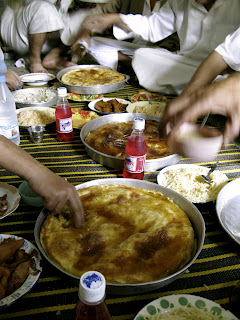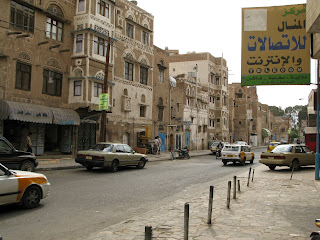Here is part of an e-mail that we sent to students on September 18.
An update on yesterdays attack:
Yemeni authorities have arrested 19 people suspected of being connected to yesterdays attack at the U.S. embassy. The attack killed 16 people, including six attackers. There is no concrete evidence that the attack was the work of Al-Qaeda, and a group calling itself Islamic Jihad in Yemen (not related to the Palestinian group) has claimed responsibility for the attack, which they claimed was a result of their demands for the release of prisoners being unmet.
While the YCMES encourages extra caution and vigilance to be exercised, it does not believe that the welfare and the safety of the students have been compromised as a result of this attack. The administration of the YCMES is in contact with the U.S. embassy and various ministries in Yemen and is doing all it can to ensure the security and safety of students. For the time being, you may continue your daily routine, though we discourage visits to western, Saudi, and Emirati establishments and any visits to the embassy should be official in nature and visitors should use the utmost discretion.
After hearing about this (and partially witnessing it from our bathroom window - we could hear the explosion and see smoke rising in the distance), I really do not feel any less safe than I did before. I am mostly frustrated that something like this happened, and has affected the already negative view of Yemen that people may have. When I walked through the streets yesterday something was different. People here didn't seem to have the same liveliness as they did before. It was almost as if they were ashamed at what happened and realized how the actions of a few people can so quickly ruin their reputation, without having the ability to influence it themselves. It is unfortunate that a small group of people can do something like this and affect the reputation of an entire country, of which most people don't know much about in the first place. It was also very strange to everyone, Yemenis and foreigners alike, that it happened at this time, during the month of Ramadan. A month celebrating religion and emphasizing time with friends and family (think a month long Christmas celebration). Clearly, the attackers did not represent any kind of majority of the population. I heard from a friend here that the group claiming responsibility for the attack had given an ultimatum that demanded the release of select prisoners from U.S. prisons, and if their request was not met, they would attack in three days. There are also threats against the British, Saudi, and Emirati embassies here if the prisoners are still not released. However, it sounds like the Yemeni government has made quite a few arrests related to this incident, so hopefully that will help to prevent things like this in the near future (since I can't imagine that the U.S. will be releasing any prisoners).
Even despite this, I have felt nothing but welcomed by the people here since I arrived. They are some of the friendliest people I have met, out of all of the places I have been. People will nearly crash their cars or motorcycles just to say "welcome to my country!" or "hello!" as they pass by (usually the only words/phrases in english that they know). I don't know what you all have been reading, but try to keep in mind the things you hear from me about my experiences here when you think of Yemen. I say this because for some reason it was imperative for almost every article I read about the attack to include "Yemen, the ancestral home of Osama bin Laden", or something else that seemed to only be included in the article to sensationalize the situation. In fact, the only person from his family that even had a connection to Yemen is his grandfather. Osama bin Laden is from Saudi Arabia, not Yemen. And even if he did have more of a connection here, would this really be relevant to all of the people living here and their character? I think not.
.jpg)



















